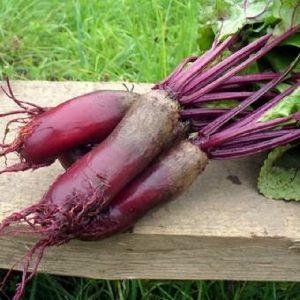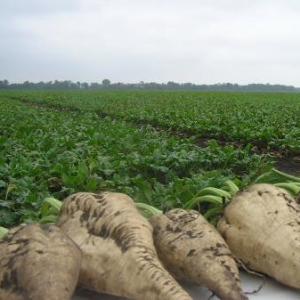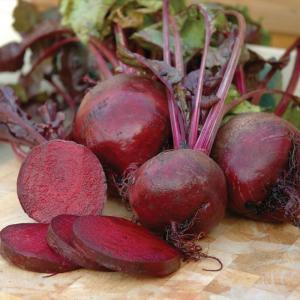How to Grow and When to Harvest Beet Seeds: A Step-by-Step Guide and Important Tips
For most novice and experienced gardeners, the choice of seed for a particular crop can be problematic. And although for many summer residents getting their own seeds seems like a waste of time and effort, it so happens that the variety you like simply disappears from sale. Most crops, for example, beets, carrots, tomatoes, have different varieties.
Growing sweet in one season beet harvest, you will want to get such a vegetable from your garden all the time. But what if you forgot the name of the variety or the packaging is no different from the one bought last season, and the vegetable itself did not grow so good? In such cases, your own planting material will be salvation, especially since even novice vegetable growers can get it. This article will show you how to grow beet seeds yourself.
The content of the article
How to grow beets for seeds
Your own beet seed is guaranteed to produce a healthy crop. Plants growing on your soil have adapted to the type of soil and climatic conditions, and also acquired immunity - the best option for growing them on a permanent basis.
Fungi and other diseases will bypass your beets. These seeds will produce large and healthy fruits. In addition, it will be nice to save finances and time for searching for seed by growing it on your site.
Note! Beet is a biennial plant, so the seed collected in the first growing season of the crop on the site will be defective. The seeds may simply not germinate or yield a good harvest.
Planting queen cells and caring for them
Organize a separate bed in the spring. The seed beet deepens to the very top, the area for normal development is 20 by 20 cm. Care is carried out as for a conventional crop - watering, loosening, weeding, timely feeding.
The beet seed plot should be fertile and even in relief. The best soil for mother plants is black soil on light or medium loam; heavy loam is not suitable. It is not recommended to grow testes on sandy loam and salt licks.
Planting is carried out in early May. The soil should be light, loose, saturated with phosphorus, nitrogen and potassium. For planting, dig holes and place mother liquors in them, then cover them with soil 2-3 cm above the root crop. In dry periods, watering is necessary.
Beet testes are planted at a distance of 70 × 70 cm; for home cultivation of a crop, it will be enough to plant 4 root crops. Beets are a cross-pollinated plant, therefore, when planting different varieties, in order to avoid over-pollination and species degeneration, it is recommended to place them on different sides of the site.
On a note. It is important to provide freshly planted root crops with nutritious fertilizers, namely, nitrogen and potassium, in the first growing season, from the appearance of rosettes to stalking.
Fertilizers are applied taking into account the soil and climatic characteristics of the site.
If the beets weigh more than 200 g, they can be cut in half along the root vegetable, through the middle of the central bud. So you can conduct a thorough examination of the mother liquors and remove the diseased planting material. In addition, the number of testes will double.
The material is planted in loose soil in a square-nesting way, that is, the row spacing should be equal to the distance between the holes in the bed.The beet halves are planted two at a time in the nest, the whole heads one at a time. The soil around the testes is squeezed, and the heads are sprinkled with loose earth 2-3 cm.
Seed collection
Of course, root vegetable seeds are not difficult to purchase in the store, but it is preferable to collect them yourself, keeping the grade, and sow them next year - this is exactly what our grandmothers did.
On root crops, a rosette of leaves first develops, and later - flowering shoots. The flowering of the testis begins in late June and lasts 20-40 days. The formation and maturation of grains ends 25-30 days after pollination of flowers. Ripeness and harvest time are determined by color.
When to harvest beet seeds
When the seed pods are brown and dry, the planting material is ready to be harvested. But it is better not to wait for complete drying: overripe seeds can crumble on their own. All branches are cut off, dried in a place closed from the wind, sorted out and sent for storage. It is better to store seeds in paper bags in a dry place. One plant gives about 50-60 g of seed.
How to harvest seeds correctly? Carefully cut the testes with the stem and hang them on the crossbar, and cover the bottom with paper. Let it hang like this for 2-3 weeks.
Important! Dry and harvest the seeds in a warm room, out of the reach of wind and moisture.
Lightly tap the testes periodically, the seeds should fall on their own. After the specified time, remove the inflorescences, slightly remember them and shake.
You can select the best seeds in this way:
- dilute a tablespoon of salt in 1 liter of water,
- place the seed in the water for an hour.
Seeds that float are unusable. Select those that fall to the bottom of the container.
Rinse the seeds and dry for a week, then place in paper bags.
Storage rules and periods
Many gardeners complain about the impossibility of storing root crops, allegedly they often deteriorate even before the onset of winter. This may be due to unsuitable weather conditions during harvesting or non-compliance with agricultural technology in the collection and storage of planting grains.
Read also:
How to recognize a beet allergy and quickly get rid of its symptoms.
Let's preserve the taste and benefits: how to freeze zucchini fresh for the winter.
How to harvest seeds for the winter
During ripening, the seeds lose their moisture content and gradually dry out. All physiological development in the material is suspended due to the lack of moisture. The seed grains at rest under the skin contain the embryo and the supply of nutrients.
Without disturbing the dormancy in any way, seeds will not develop. If the humidity in the room exceeds 12%, the seeds will begin to germinate. Maintaining a dry microclimate in the storage environment is the main condition due to which the seed remains viable.
be careful! The seeds are poorly reflected in their content in a warm and humid environment.
If the room where the seeds are stored, the temperature and relative humidity are exceeded, then after a couple of months they will lose their ability to climb. The same will happen with temperature changes. The optimal temperature level for storing material is 12-15 ° C, but the access of fresh air should be limited.
In an unheated room in winter, storage of material is unacceptable. At low temperatures, the seeds become damp and die, especially if the temperature does not rise above 0 ° C.
Sowing preparation
Planting beets for novice gardeners does not always succeed: the seeds do not germinate well or the vegetable grows small. But beets are one of the first among vegetable crops in terms of yield and the presence of useful properties. The culture is well kept almost all year round. What could be wrong?
In growing root crops, one of the key points is the correct preparation of the seed.If you ignore the technology, letting everything take its course, you should not be surprised at the undesirable outcome at the end of the season.
Seed treatment
Beet seeds germinate slowly. For sowing, it is better to use the hatched seeds.
To prepare the planting beet grains for planting, they are processed in one of the following ways:
- Soaking in superphosphate solution. In 1 liter of warm water, stir 1 teaspoon of the substance. In such a solution, the seeds will need to be kept for 24 hours, then dried.
- Bubbling. The seeds are placed in water with air supply. The duration of such processing is approximately 18-24 hours.
- Aging in wood ash solution. Pour 1 tbsp into 1 liter of heated water. l. ash, stir. We keep the seeds in such a solution for at least a day.
After processing, rinse the seeds with warm water, wrap in a damp soft cloth, and hold for 2-3 days in a room with a temperature of at least 22 ° C. If the fabric dries, it must be dampened.
Important Tips
To grow a high-quality sweet root crop every year, you will need a near-perfect seed.
Tips from experienced agronomists will help novice gardeners not make mistakes:
- The root variety chosen for planting must not be hybrid. Pay attention to which regions of the country it is recommended to grow. There is a risk that the grown beet seeds will simply not be suitable for your climate.
- Seeds are stored only in paper bags, since the seed must breathe. In foil, cellophane or thick paper, the grains will simply deteriorate during the storage period.
- Do not harvest seeds in the first year of the crop. The fact is that in the most frequent cases, the tendency to flowering in beets appears when the seedlings are frozen. The preservation of the species is biologically inherent in the plant, therefore in such cases it is forced to give all its strength not to the fruit, but to the peduncle.
Output
Getting seeds from a crop you like is not too laborious. Don't be afraid to take the time to prepare the seed yourself. Their seeds will be several times larger than the store ones, and, consequently, the harvest will be sweeter, healthier, large and of high quality. The better you choose a plant for planting on seeds, the better the resulting inflorescences will be.
Interesting information on how to get healthy beet seeds in this video:
One boltology, no timing, no type of seeds before harvesting ...
Irina, thanks for your feedback, but perhaps you did not read the article very carefully. Information on the collection time is in the article, under the appropriate heading. Please keep in mind that the time frame varies by region:
“The flowering of the testis begins at the end of June and lasts 20-40 days. The formation and maturation of grains ends 25-30 days after pollination of flowers.
Ripeness and harvest time are determined by color... When the seed pods are brown and dry, the planting material is ready to be harvested. But it is better not to wait for complete drying. "
How to understand this phrase? "Do not collect seeds in the first year of the crop." I will collect seeds in the fall, but cannot they sow them in the spring?
The author believes that it is better to collect in the second year. The former may be weaker. You can try and plant them, of course, but there can be a lot of marriage.